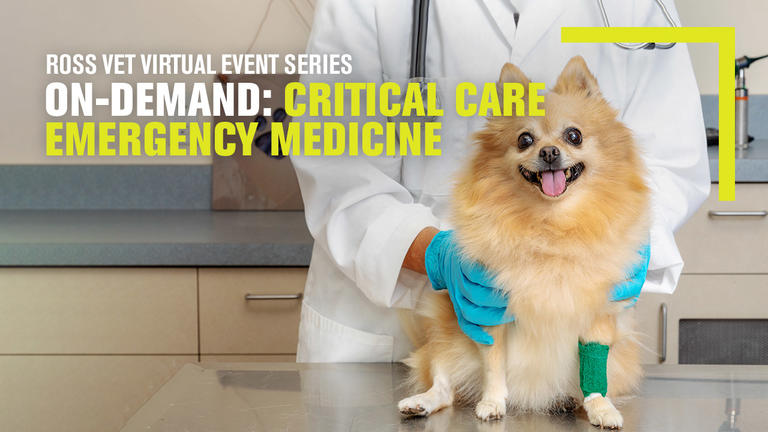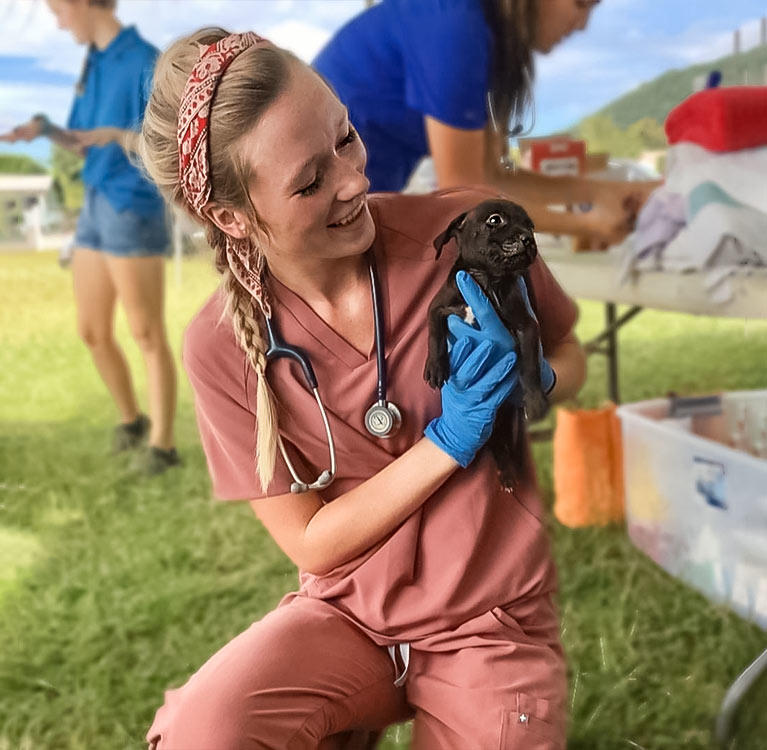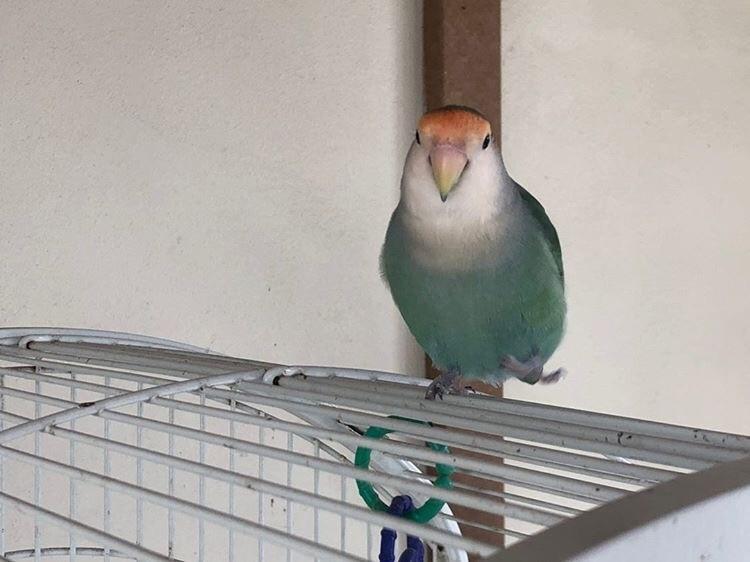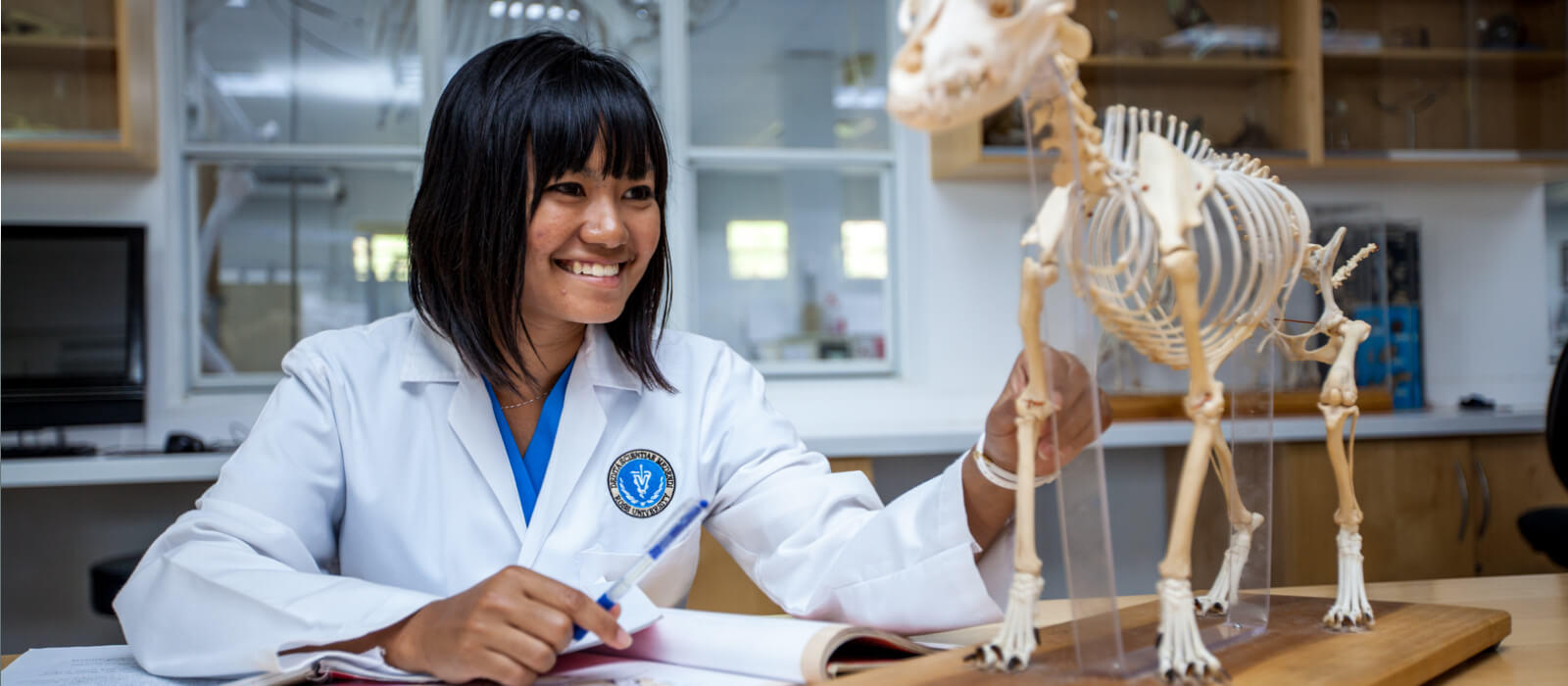Veterinary Emergency and Critical Care is a veterinary specialty that could save your pet's life! These vets are exposed to a variety of critical, high-stakes cases, and no two days are ever the same.
Serving on a continuum of care, working in close collaboration with other specialties, emergency and critical care veterinarians focus on the immediate needs of severely ill or injured animals, as well as management of the critical medical and surgical patient beyond the primary problem. These dedicated veterinarians typically work at a special emergency facility that’s either open during the hours that regular veterinary clinics are closed, or open 24 hours a day.
Emergency and critical care veterinarians complete training and certifications that make them especially qualified to handle the emergencies that come through the door. It might be a pet that has been hit by a car or bitten by a snake, a cat that’s accidentally swallowed poison, or a dog that has swallowed a sock. In other cases, a regular veterinary clinic may send a really sick patient to the emergency clinic for overnight care, much like how human patients are cared for in the intensive care unit (ICU) of a hospital.
Unlike humans, pets can’t tell the doctor what’s wrong. Often, these specialists have to be a detective to find out what’s going on.
Get familiar with protocols for stabilizing, surveying, and treating critical cases
Triaging patients is the process of classifying patients and their medical problems according to the urgency of their situation, and then continuously reassessing.
Your initial contact with a client may occur over the phone. As the first encounter, your job will be to recognize emergencies. You may advise on first aid and transporting critical care patients. Once a patient arrives, your triage team will determine the degree of urgency based on chief complaint, general appearance, vital signs, and history.
| Triage Classification | Description | Example |
| First Priority | Patient Critical Treatment must be initiated within seconds to minutes – Bring immediately to treatment room |
Major bleeding, Breathing problems, altered mentation, shock, history of toxin ingestion, etc. |
| Second Priority | Patient Urgent Currently stable, but may become first priority patient, need to be reassessed, or have treatment initiated within minutes to hours |
History of major trauma, history of unsuccessful urination, repeated vomiting or diarrhea, etc.History of major trauma, history of unsuccessful urination, repeated vomiting or diarrhea, etc. |
| Third Priority | Patient Stable Pressing problem that is non-critical Treatment initiated within hours |
Fever, lacerations, vomiting, diarrhea, etc. |
| Fourth Priority | Patient Completely Stable Needs evaluation, but not urgently |
Anything not listed above. |
Assess Before You React: Check the pet’s level of consciousness and use the ABC’s of first aid.
Emergency and critical care patients may present with life‐threatening problems requiring immediate care. Observing ABCs is a rapid “look, listen and feel” assessment of life-threatening conditions in order of priority and following a standardized approach to decrease the risk of missing a life‐threatening problem.
A stands for Airway: Note whether the chest is rising and falling while listening closely for the sounds of breathing. If you are certain the animal is unconscious, check for airway obstruction by extending the head and neck and pulling the tongue forward to look into the mouth. Do not put your fingers in the animal’s mouth. Pull-on the tip of the tongue while restraining the upper jaw. If you meet resistance, do not continue because the animal is not unconscious and could bite you. If you are sure the animal is unconscious and you are meeting no resistance opening the mouth, clear the mouth with a finger sweep or a shake with the head down.
B stands for Breathing: If the animal is not breathing and the airway is clear, attempt to perform CPR by rhythmically compressing the chest. You can also hold the mouth shut and breathe into the nostrils with the head and neck extended if you are sure the animal is not conscious.
C stands for Circulation/Cardiovascular: Put your ear to the chest and listen for a heartbeat. Lift the lip to see the color of the gums. The color should be pink and return to the normal pink color within one to two seconds after applying pressure with your finger to the gum line or the inner lip. White gums may mean blood loss or shock. If you do not hear a heartbeat, try to perform CPR chest compressions.
D stands for Disability: Assess for disabilities. Does the animal appear to be seizing? Does it have an altered pain sensation?
E stands for External: Assess for external injuries or wounds. Control any obvious bleeding and provide initial medications if necessary, to control pain or to help sedate the animal.
Once you complete your ABCs assessment and provide the appropriate intervention, repeat the process until is appropriately stabilized.
Common Traumas Treated in the Emergency Room
Emergency and Critical Care veterinarians to deal with all sorts of emergencies and presentations. However, certain conditions are seen and treated more frequently.
Ingestion Issues
Some foods that are perfectly safe for humans to eat are toxic to their pets. You’ve probably heard that chocolate is bad for dogs, but it can kill cats too. Other common foods that can threaten a dog’s life are foods with the artificial sweetener xylitol, raisins, grapes, and nuts. Cats should never eat raw tomatoes, raw potatoes, or other root vegetables like onions—these can be deadly. Both dogs and cats can accidentally ingest toxic chemicals such as insecticides, rat poison, household cleaners, prescription medicine, and fertilizers.
Trauma
Whether your dog got hit by a car or your cat was attacked by a coyote, trauma is a top reason for pets to make an emergency room visit. Blunt force trauma, such as a run-in with a car, may not seem dangerous if there is no blood, but internal injuries could be severe. Bites, cuts, scrapes, and other issues can damage skin and underlying tissues like fat and muscle. Infections may also develop quickly without medical attention.
Respiratory Distress
Coughing, choking, and labored breathing all point to respiratory distress in your pet. It could mean viral or bacterial lung infections, allergic reaction to insect bites, sensitivity to medicine or vaccines, heart failure, or even cancer.
Your Next Steps
Emergencies happen, even if we’re prepared. An emergency and critical care veterinary is equipped just for these situations and will do their best to ensure the best possible outcome for the pet and the pet owner. Interested in learning more about the profession? Read more about What Emergency Veterinarians Do on our blog.
Ready to become a veterinarian? Learn more.
Webinars On-Demand
Learning more about specialty areas in veterinary medicine. Visit our full list of virtual events and live streams coming soon. Each one is hosted live, so you’ll get the opportunity to have your questions answered by our hosts in real-time. Secure your spot today!







